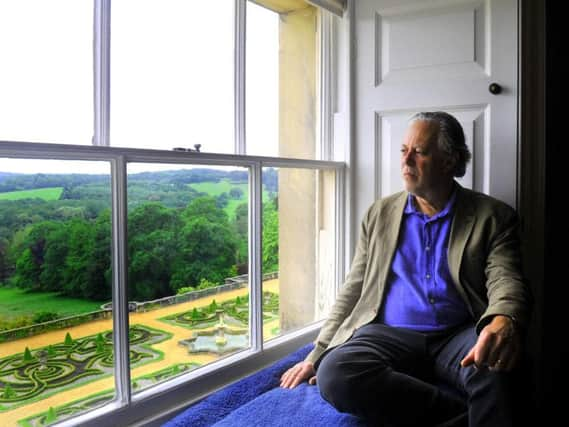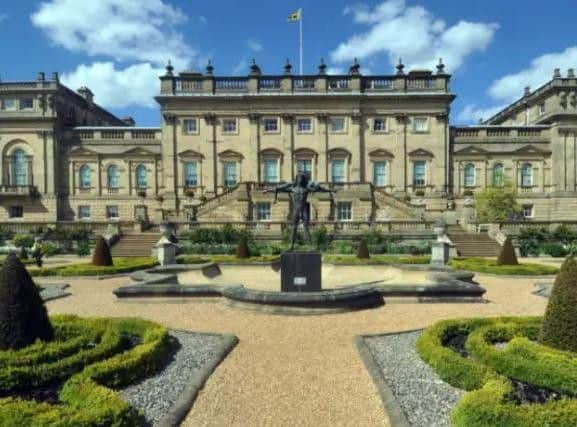The Earl of Harewood on how being a 'guardian' of Harewood House has shaped his life


However, if you’re fortunate enough to be here on a cloudless day when the light streaks across its stone facade, then it truly is a sight to behold. Harewood House is one of the most culturally significant country houses in England, home as it is to paintings by Thomas Girtin and JMW Turner, a remarkable collection of Renaissance masterpieces - including works by Titian and El Greco - and some of the finest Thomas Chippendale furniture you will find anywhere.
It is also the focus of a compact new book, called simply Harewood House, the latest in Thames & Hudson’s Pocket Photo Books series. It includes more than a hundred photographs by Harry Cory Wright, with an introduction written by the Earl of Harewood himself, David Lascelles.
Advertisement
Hide AdAdvertisement
Hide AdHow Harewood House is transforming itself for a new generation“I know the house and its contents really well but something like this helps me see the house anew. I look at some of the photographs and think ‘gosh, I never noticed that’,” says David.


Wright’s impressive photographs capture the spirit of the building and the fine artistry and craftsmanship contained inside.
“It’s a house, not a museum,” says David, “and any house you live in changes, however big or small, and that’s something he’s really captured.”
We are sitting in his private study upstairs which visitors could soon be able to glimpse for themselves, with tours of the family’s living space expected to start later this year.
Advertisement
Hide AdAdvertisement
Hide AdFor as well as being a cultural jewel in the nation’s crown, this is also a family home and has been since Edwin Lascelles, the 1st Earl of Harewood, had this treasure house built in the 1760s.
“I’ve known this house for pretty much all of my life and I have very particular memories,” says David. “It’s a home where things change, not just the light, but we have different things going on in the house. It’s not just about saying to people ‘here’s all this old stuff’ – we try and keep it alive and keep people engaged with it and introduce them to new things.”
This is how you can stay on the 4,000-acre Harewood estateThings like the inaugural Harewood Biennial – Useful/Beautiful: Why Craft Matters – which celebrates British craft makers and designers, including everything from fashion to metalwork.
It’s exhibitions like this that help prevent the house from merely being preserved in aspic, something the Harewood family are particularly keen to avoid.
Advertisement
Hide AdAdvertisement
Hide Ad“It’s about keeping it alive in every sense. Keeping it alive financially, that’s always a challenge, but also in terms of what’s going on here,” says David.
“In China, anything old is called a ‘cultural relic’ and this place isn’t like that where the clocks have stopped, it’s still relevant to the world today.
“If it wasn’t for this magnificent house and furniture and the land that surrounds it then people wouldn’t come here, so you have to look after these things.
“But that’s the starting point rather than the end point. We don’t just want to keep things as they were. We have this amazing opportunity to look after a bit of English cultural history and
landscape in a proper way, and that’s really important.”
Advertisement
Hide AdAdvertisement
Hide AdThe way country estates like this are run has changed dramatically over the years.
“When the house first started opening to the public on a regular basis it was very much ladies from the village making sandwiches to hand out round the tearoom, and that was the approach for pretty much all country houses back then. Now it’s much more professional. We have a team of people with experience running visitor attractions, a marketing and PR team and a team looking after the collections.
“You need to have that because you’ve got to compete on those levels, you need to look at how you engage with the public and the kind of events you put on. But at the same time you have to be careful what you do.
“A million and one things have been suggested here over the years, from go-kart tracks to safari parks, but rightly we’ve resisted all those because what we’ve got here already is pretty amazing and unique, and if we present it in the right way then people will want to come and see it. That’s a big challenge without doubt, but it’s about being confident with what you’ve got and not try and be something that you’re not.”
Advertisement
Hide AdAdvertisement
Hide AdAnd Harewood House, which is run by a charitable trust, is thriving right now with membership numbers of around 8,000. Last year, it launched special members days when they could come and view exhibitions in the house ahead of the general public, which proved popular.
The tragic fates of Yorkshire's lost country housesThe estate is also involved in conservation and environmental work.
“Our conservation policies have become much more focused and up to date. My son Ben, who now runs the estate, has a background in conservation and environmental management. There is an ambition for Leeds to be a really green city and Harewood is part of that.”
The estate already has a woodchip biomass plant that helps heat the building and there are other broader conservation projects going on behind the scenes. “It’s all about looking after the house and the grounds for the long term,” adds David.
Advertisement
Hide AdAdvertisement
Hide Ad“I’ve never felt a sense of ownership that this is mine, that’s something I’ve always felt very strongly. I benefit from being here but it’s not just about me or my family, it’s bigger than that. We’re just the guardians and it’s our job to ensure that it keeps going.”
Harewood House, published by Thames & Hudson, is out on Thursday, priced £12.95